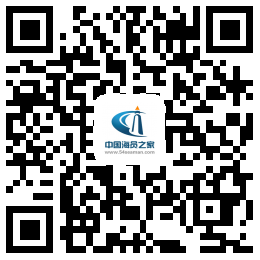Anchor Watches
The vessel at anchor remains vulnerable to various elements, and requires a vigilant watch as always. Particular dangers to be aware of in anchorage situations include:
- Dragging of anchor due to wind, tide or current.
- Other vessels dragging, or passing too close, or anchoring too close.
- Swinging around the anchor in such a way as to approach too close to other anchored vessels or shallows.
- Unwelcome visitors, thieves, pirates, etc.
The OOW is required to give close attention as follows:
Ensure you are always aware of the engine room status of readiness, which may vary from a few minutes to one hour dependent upon prevailing conditions and circumstances. Confirm each watch that the required status is being maintained.
Monitor the position frequently and carefully. Make full use of transits, beam bearings and head/stern ranges to quickly recognize signs of dragging. Use the GPS ‘anchor watch’ facility if available.
Monitor the position and movements of other vessels carefully, bearing in mind there is an increased risk of slow moving, less maneuverable ships being carried down on to own vessel, especially in strong winds, tides and currents. Do not hesitate to warn off other vessels by whistle, ALDIS lamp or VHF. Inform the Master and alert the duty engineer at the first signs of potential danger.
Monitor the weather conditions closely, and inform the Master if any signs of significant change. It may be necessary to shorten the engine room readiness status, or pay out more cable. Also inform the Master in case of reduced visibility. Although our vessel is not moving, there is a greatly increased danger from other vessel maneuvering ‘blind’ inside the anchorage.
Monitor the movements of small craft inside the anchorage, and particularly in the vicinity of own vessel. Beware, especially in high-risk areas, if craft approach too close when no visitors are expected.
Do not neglect lookout duties. Do not ‘switch off’ because you assume you are safely anchored.
Monitor the assigned VHF channels continuously for Port Control announcements, information, weather warnings, and shifting notifications. Ensure you are aware of the correct channels to be covered. Clarify with the Master any calls and contacts to be made. Do not make any calls that have not been authorized by the Master. If the pilot station has any information, they will inform us. No need to bother them every few hours.
Keep the watch-keeping rating fully employed. Watches are not to be conducted in cabins or dayrooms. Security patrols of all deck and accommodation areas shall be combined with frequent visits to the bridge, and walkie-talkie contact shall be maintained throughout. In ‘high risk’ locations the security watch will be doubled.
Ensure the proper signals for an anchored vessel are displayed day and night, together with appropriate flag signals in daylight hours. Ensure the vessel is well illuminated throughout the hours of darkness.
Gangways and pilot ladders shall be hauled up to deck except when required for visitors, and always at night.
Monitor the close vicinity of the ship carefully at all times for inadvertent breaches of pollution regulations. This includes excessive smoke emissions, as well as oil and garbage.
-------------------------------
This Bridge Memo is developed through more than 15 years by some very experienced ship's masters.It is mainly based on Capt. Inn Davis's rules from Expedo Ship Management (Canada) Ltd.I collect them only for my personally study reason; and for easy reference purpose.
Here, I, as an officer under some instruction of Capt Davis, give my full respects and thankful to Capt. Davis.
-----------------------------------------------------
2nd Officer
Ever-student from Dalian Maritime University
Be proud of DMU
请登录后评论~





 联系我们人工客服
联系我们人工客服



















 :1391995811
:1391995811

